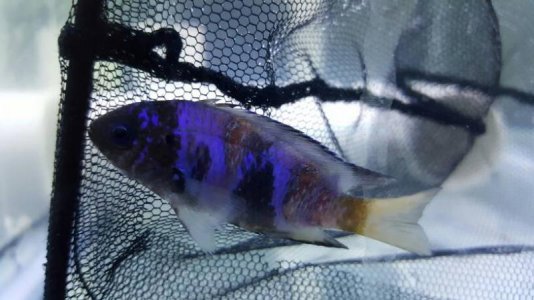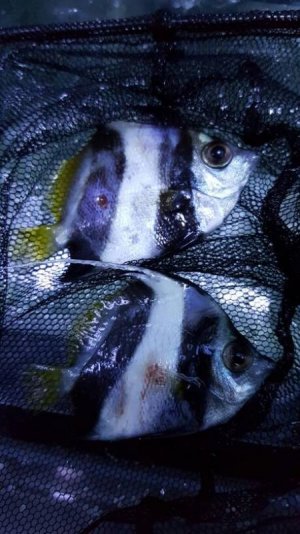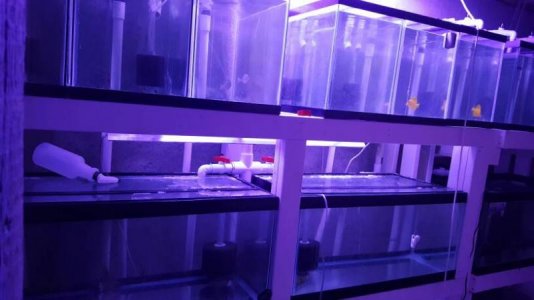

So here are pictures of three infected fish, two dead and one still alive.
Quarantine procedure
Fish shipped in from California distributor so acclimation as follows.
Quarantine salinity began at 1.012
pH adjusted to 6.5 to begin acclimation through CO2 injection via controller and brought up by .3 per day until at 8.1.
Bags floated to equalize temp, fish then freshwater dipped for 3-5 minutes in pH adjusted freshwater with methyl blue, removed if any sign of stress.
Treatment began day two with prazi dose 2.5mg/l and metronidazole at .25 grams per 20 gallons. Metro redosed every 48 hours for 5 total treatments. Chloroquine phosphate began at day 7 at 15mg/l single dose.
Water quality checked daily, ammonia 0, nitrite 0, nitrate 0, pH 8.1, dKH 10 temp 76-77.
Quarantine system 12 tanks total plumbed together with two wet dry sumps and sponge filters in each tank. Upon first sign of disease tank is isolated from rest of system and treated additionally with enrofloxacin at 4 mg/l because initially suspected a bacterial infection. Redosed every 48 hours but saw no change in disease process. Any fish showing signs of disease died within 48 hours, usually within 24 or less.
One tank of 12 heniochus unaffected along with a tank with 36 engineering gobies and another with snowflake moray eels. 4 tanks with 100 damsels (yellow tails and Fiji blues) and 12 heniochus in another tank all came down with this and once one in the tank did the entire tank full slowly died out, even after being moved to new empty systems.
So anyone have any ideas? Also what do I need to do with the system now. Bleach it and start over? System is 300 gallons so would like to avoid that if possible restarting that much biofilter is not easy.
Thanks for your help.

